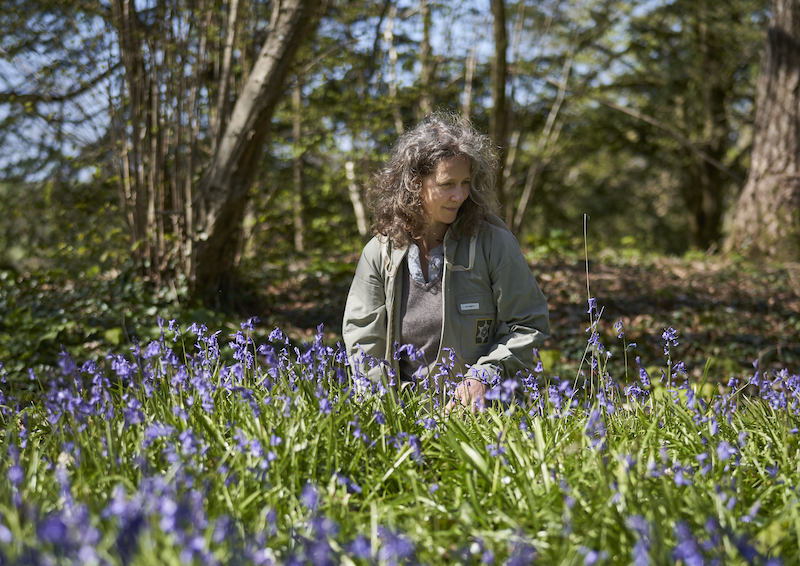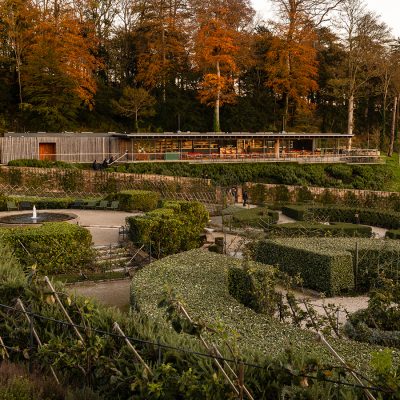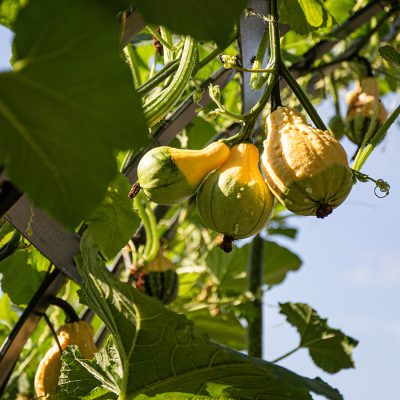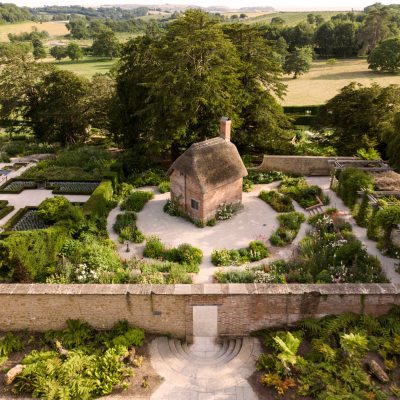Meet the Beekeeper
June 28th, 2021
From taking care of our wild and native bee colonies to taking guests on tours of the hives, Head Beekeeper Paula Carnell and the bee team are a busy bunch.
A medical herbalist and global consultant on beekeeping and the healing powers of honey, Paula is particularly interested in the connection between bees’ health and our own. We asked her how she got started in beekeeping, and what’s involved in a typical day in the life of a beekeeper at The Newt.
When did you start working with bees? What prompted you to start?
I’ve been working with bees for the past ten years and they’ve become my life’s work. My husband – The Newt’s Cellar Master, Greg Carnell – built me a hive whilst I was bed and wheelchair bound with Ehlers Danlos syndrome. Having previously worked as an artist, exhibiting around the world, I suddenly found that I was unable to paint or work. With no expected cure, I had to adapt, focusing on what I was able to do rather than what I could no longer achieve.
I knew that I could watch bees from my bedroom window, and that’s how it started. My mentor Chris Wright would visit and take care of the bees for me; when able, I would join him and learn from him. I asked lots of questions, and as I recovered, took over the bee care and my colonies expanded. I learned about the benefits of propolis, and how important the honey was for the bees to feed themselves on. I then became passionate about educating everyone about the parallels between bee and human health. When I was asked to help with bees at The Newt, I was so excited to put my imagination and dreams into reality, working with the wild colonies across the woodland and practicing keeping bees in a naturopathic way – just as I had recovered my own health. It now gives me such joy to be able to walk around the gardens, recording the various species of bees living there, and most of all, leading visitors around on Bee Safaris sharing the stories of our colonies.
How has working with bees improved your life? Why are you so passionate about them?
Although I began with an interest in honeybees, my work with them expanded my interest to many other insects, even wasps. I am particularly enjoying seeing the various species of solitary and bumblebees feeding from plants in my garden, and around The Newt. You need to be calm working with bees, and once you understand their importance, they change every aspect of your life. I am now far more aware of the connectivity of all things, including our impact on nature and our environment. Bees are a key indicator species, and when we understand what makes them sick or starving, you can’t help but be inspired to try your best to help them!
Can you name someone who has inspired you along the way – what did they teach you?
American Beekeeper, biodynamic farmer and author of ‘The Song of Increase’, Jacqueline Freeman. She taught me to listen to my intuition – and to the bees. To not be afraid of going against the mainstream, and have the confidence to implement what I believe to be right for the bees.
What does a typical day of beekeeping involve?
Depending on the time of year and weather, it can mean an early start if moving a colony. Each colony needs one acre of flowering trees and plants to feed them; if they are in an area that can’t sustain them or is too toxic, they need to be moved. Bees need to be moved before they wake up or after they’ve gone to sleep so midsummer can regularly involve a 14-hour day. All my colonies are checked weekly. A full opening of a hive is done twice a year, or once a fortnight for new colonies to ensure that eggs are being laid and the queen is mated. Through the winter months, hives and hive parts need to be cleaned and repaired, and painted with shungite and propolis. Bait hives need to be positioned and baited to entice new bees.
When the hives are busy collecting nectar, regular checks are needed to ensure the bees have enough space to store honey, and any signs of swarming are prevented by splitting the colony, or observed and encouraged where possible to move into a bait hive.
Honey extraction is a busy and sticky process where the honey is removed from the hives. We don’t use smoke when opening hives to minimise stress to the bees. This means that we all need to be fully tuned to the characteristics and temperament of each of the colonies. It’s not just about what happens inside the hive, but also the environment that surrounds them.
What are some of the benefits of eating and using honey?
There’s plenty of research about the health benefits of honey, especially the trace minerals, vitamins and amino acids in raw honey. In particular, local honey may be best for us, as it contains small doses of local pollen that can help with allergens. On the Bee Safari I explain how important honey is for both bees and humans; bees need honey to make wax for their hive, and to feed on throughout the winter; so we always leave enough for them, too.
What is your favourite fact about bees and honey?
I have two:
1) In a bee’s lifetime, it only produces 1/12th of a teaspoon of honey; and
2) When a bee sees a good food source, she dances more.
How can we find out more?
The Bee Safaris and workshops that we hold at The Newt are mine and the team’s opportunity to not only show visitors the various types of beehives, but to share the wisdom of the bees, and educate people about how we can protect them.
Click HERE to book a Bee Safari or join Paula for one of two special bee-themed workshops this July.




